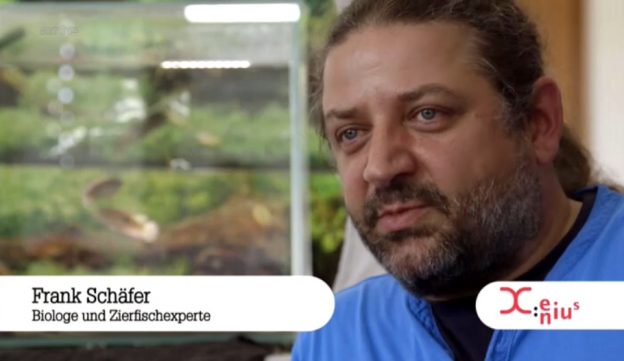
“Beautiful fish, hard business? From Amazon River to the fish tank – dazzling, exotic and well-traveled”
that was the theme of ARTE’S X:ENIUS documentary about the long way of ornamental fish, from catch to the aquarium at home.
An interesting, informative and versatile TV report featuring our partnerAquarium Glaserand our Aqualog editor in chargeFrank Schäfer- happy watching!
Aseach monthwe also present thetop 5fishimports of November:
First place

…goes to a species of Moema from Venezuela, which was unknown to us so far. Some killifish-specialists informed us now that this fish represents a population of the monotypical (= containing only one species) genus Renova, which was described scientifically only in 1995. The genus Renova differs from Moema only in a few minor anatomical details (less vertebrae, different head profile, smaller maximum size etc.).
This species was known among killifish enthusiasts under the name of “Moema from Isla Raton” before it was described scientifically. It is an annual (= lives for only one season), bottom-spawning species. Type locality is the island “Isla Raton” in the Orinoco river. This island is about 14 km long and 6 km wide. Here Renova oscari occurs along with the killifish species Rivulus sp., Micromoema xiphophorus and Terranatos dolichopterus.
Second place

Despite extremly high water levels (four meter over the normal level of the season) the first wild collected discus of the new season came in.They are very beautiful!
Third place

In 1975 the Berlin aquarist Günter Daul collected during a holiday trip in Mexico some swordtails in the state of Quintana Roo and brought them to his homeplace successfully. This strain was called later erronously Xiphophorus hellerii Yucatan. However, the state of Yucatan is located west of Quintana Roo. Thus the strain should be named correctly Xiphophorus hellerii Quintana Roo; but the fish has been illustrated so often in the aquarium literature under the name of Xiphophorus hellerii Yucatan that a correction would lead only to unnecessary confusion. For all who are interested in the history of the fish we suggest the (German written) article: Wagenknecht, U. (2012): Der Yucatan-Schwertträger.
It is very interesting that this population has survived as a pure strain now for 38 years in the tanks of hobbyist. The genetics of this polychromatic variety are also very interesting. There do exist rather yellow-bellied females and rather white-bellied females. If one crosses a male that has much red colours with a yellow-bellied female, the offspring is pure red males and yellow-bellied females. If one crosses a rather blue-green male of the strain with a white bellied females, they also breed pure. However, hobbyists usually breed with mixed schools to preserve the genetic variability of the strain.
Fourth place

Rachow´s Nothobranch (the species has been named to honour Arthur Rachow, thus the common name must end on a “w”) belongs not only to the longest-serving, but also to the timeless most beautiful species of killifish at all in our aquaria. Most often the orange colour morph is kept, which has been collected in 1958 near Beira and never disappeared since then, because enthusiastic hobbyist preserved them by breeding.
Currently we can offer not only the “common” orange morph, but also for the first time ever an albino breed, which also has a very special charm.
Fifth place

We received this beautiful tetrafrom Venezuela. So far were not able yet to determine it exactly.
Anzeige






